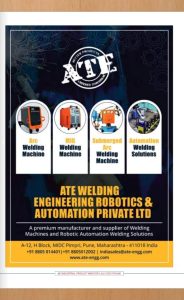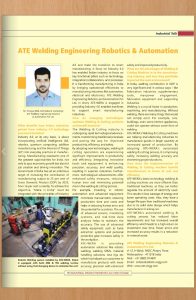ATE Industrial Product Monitor E- Magazine July 2023

A premium manufacturer and supplier of welding machine and robotic automation welding solution.(Click here)

A premium manufacturer and supplier of welding machine and robotic automation welding solution.(Click here)

A premium manufacturer and supplier of welding machine and robotic automation welding solution.(click here)
